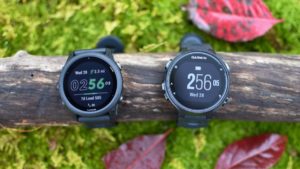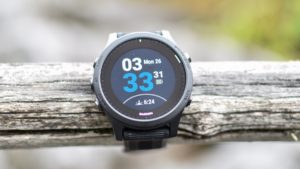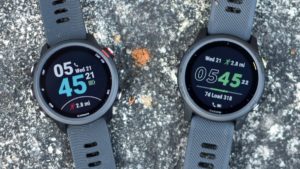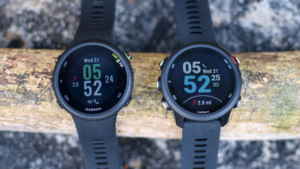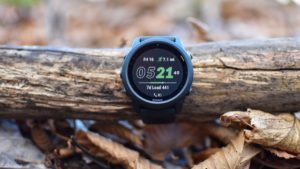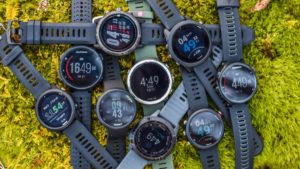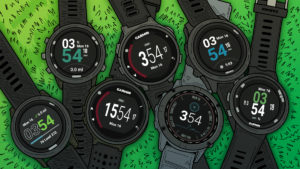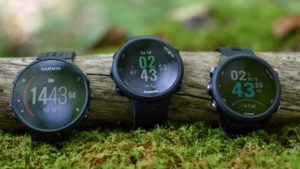We are a participant in the Amazon Services LLC Associates Program, an affiliate advertising program designed to provide a means for us to earn fees by linking to Amazon.com and affiliated sites, this is at NO extra cost to you. These small fees allow us to create great content and keep striving to create better content.
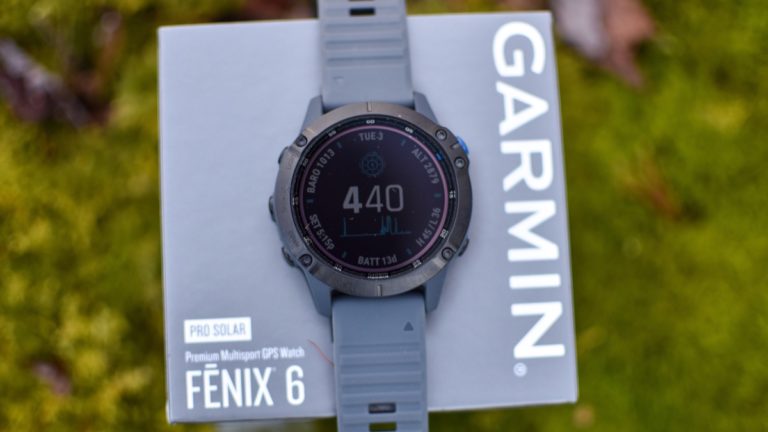
Garmin Fenix 6 Review
Are you looking for an excellent watch to use while you’re running a marathon? In this Garmin Fenix 6 review, we’ll look at what the watch is, its main features, and how it may (or may not) be suitable for you as a runner.
First, however, a brief explanation of our process: We bought this watch to check it out and take our own pictures of it, and the watchmakers are not sponsoring us. This review is here strictly to help you during the Canaan Valley Half Marathon and any other events we might oversee in the future.
Garmin Fenix 6 Overview
Garmin’s Fenix 6 is an advanced smartwatch designed for serious athletes. It tracks multiple stats while you exercise, including heart rate and distance, while also providing advanced features like GPS positioning to help you navigate no matter where you go.
While our main focus is on marathons, this is a multisport watch that’s also suitable for activities like skiing or hiking in the mountains. Notably, it’s tested to military standards for shock, thermal, and water resistance, while the large display makes it easier to see the screen. The display is about 18% larger than previous Fenix watches, which is a lot for a smartwatch.
Garmin itself is a public, multinational technology company. While they produce products for various fields, including aviation and marine activities, they’re most known for their GPS technology.
Fenix 6 Pros:
- Garmin is a well-known, reputable company with clear experience in this product category
- This watch is highly practical and allows you to adjust many settings to configure it to your liking
- It has an extremely large battery, giving it outstanding longevity for longer events
- One of the models has a solar lens and can charge in the wild
Cons:
- The Fenix 6 is significantly more expensive than many other options
- It gets even more expensive if you pick one of the upper models
- You won’t have the same flexibility for installing apps as you can on other watches
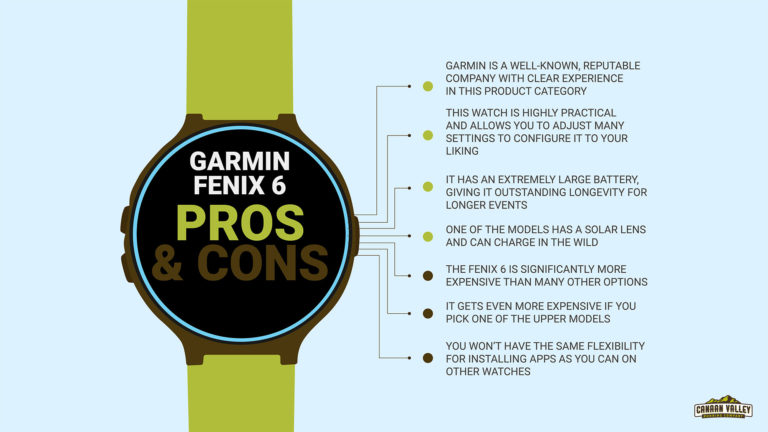
Things To Consider Before Buying a GPS Watch
GPS watches like the Garmin Fenix 6 are for serious athletes. Most smartwatches don’t have native GPS capabilities, nor are they built to the same durability standards as this watch. Regular smartwatches may have features like accelerometers, but those aren’t nearly as accurate.
Consider buying a GPS watch like this one if you run a lot of marathons and want to track your progress while you’re in the middle of the event, or if you do a lot of exercising outdoors and want to have a way to navigate to and from your destinations. The solar version of the Fenix 6 is particularly good for it because you can recharge it with sunlight alone.
Don’t bother with a GPS watch if it’s too far outside of your budget range or if you plan to stick exclusively to marked paths and don’t care about monitoring your progress. If you only want to monitor your heart rate and overall fitness during races, there are plenty of cheaper options that can provide all the information you need.
In short, GPS watches are luxury products. While extremely capable at what they’re designed to do, most people don’t need them to complete a marathon.
Garmin Fenix 6 Features And Benefits
Here are the main features and benefits that the Garmin Fenix 6 offers.
Case Size
Garmin’s Fenix 6 comes with three case sizes, and these matter a lot for the overall performance. Space is at a premium on watches, and manufacturers will use every bit of it.
The regular case size, usually referred to simply as the Fenix 6, is 47mm across and offers a 260×260 circular screen. It has a mid-size 270mAh battery for average performance in this line.
The small case size, often called the Fenix 6S, is 42mm across and has a 240×240 screen. It’s a little lighter than the regular version, and most of that loss comes from the chance to a 180mAh battery. Unsurprisingly, this case offers the shortest lifespan.
The large case, called the Fenix 6X, comes in at 51mm across. Its 280×280 screen displays things a little better than its smaller brethren, which is extremely useful if you want to read information easier. It has a 450mAh battery for significantly better battery life despite the larger (and therefore more power-hungry) screen.
The 6S and 6 models come in your choice of regular or pro features. The watch’s pro version is more expensive but adds things like PacePro, ski maps, and the ability to preload music onto your watch. The 6X only comes in the pro version.
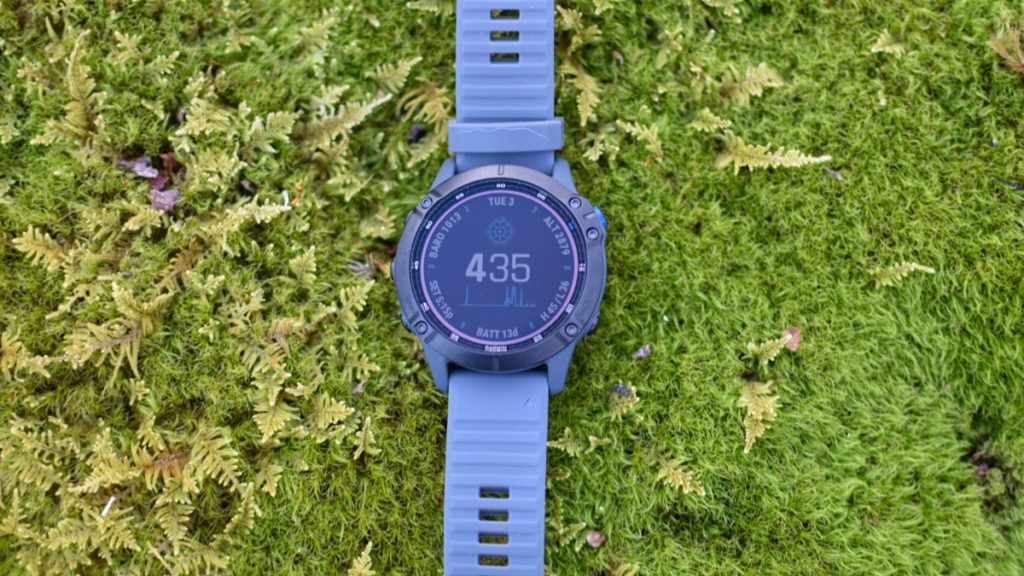
Fenix 6 Editions
Outside of case sizing, the Garmin Fenix 6 also comes in three main editions. These are important changes, but not to the same level as the case size.
The standard version is known as “Gorilla Glass,” which is a type of glass from Corning that’s both lightweight and damage-resistant. It’s not the best option on the market, but it is surprisingly durable.
The next option is the sapphire crystal lens. This lens is extremely durable and resistant to damage, with a rating of 9 on the Mohs scale of mineral hardness. This puts it about on par with things like titanium carbide and a little behind diamond. In practical terms, this means most substances can’t scratch it. However, the sapphire lens does dim screens a little.
The final option is solar glass. This option is not as durable as the sapphire lens, despite costing more, so keep that in mind. However, as the name implies, a solar lens allows your watch to recharge from sunlight. This makes it easily the best option if you want to exercise in the wilderness and ensure you have a way to navigate home.
You can use the regular Gorilla Glass on the 6S or 6 case models, or the solar glass on the larger 6X case. The sapphire lens covering is available on all three case sizes.
We recommend the sapphire lens if you’re getting any GPS smartwatch (and the option isn’t exclusive to Garmin). The solar glass is interesting, but it won’t make a real difference unless you’re going into the wild for extended periods. A durability-focused lens, in contrast, helps protect your investment.
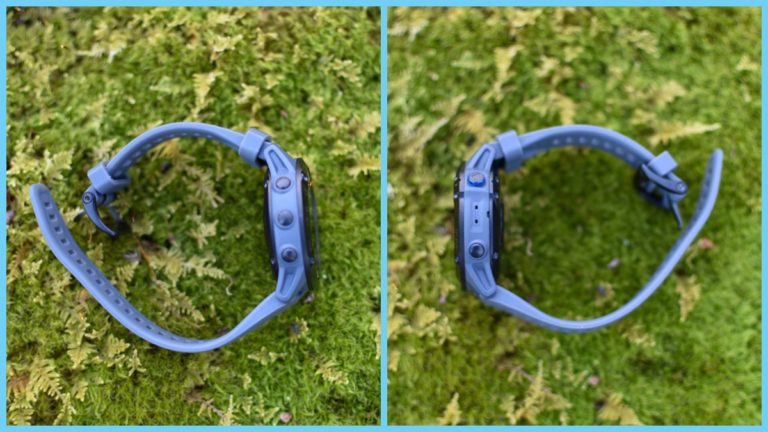
Power Manager
This is a feature we really like. The Fenix 6’s power manager system allows you to adjust many features of the watch to determine how often the watch uses them. For example, you can slow the rate at which the GPS checks its positioning, which drastically improves battery life.
Energy Monitor
The energy monitor feature on the Fenix 6 is a relatively new invention for smartwatches. In brief, this feature collects data like heart rate variability and sleep duration to help predict your energy levels. This also provides prompts for when it’s a good time to start exercising or, conversely, when it’s time to take a rest.
Taking rests is just as important as getting enough exercise. Your body needs time to recover from exertions, and by optimizing when you take those rests, you can improve the overall results of your exercise.
In other words, this feature sounds simple at first, but it can have a huge impact on your overall health and fitness.
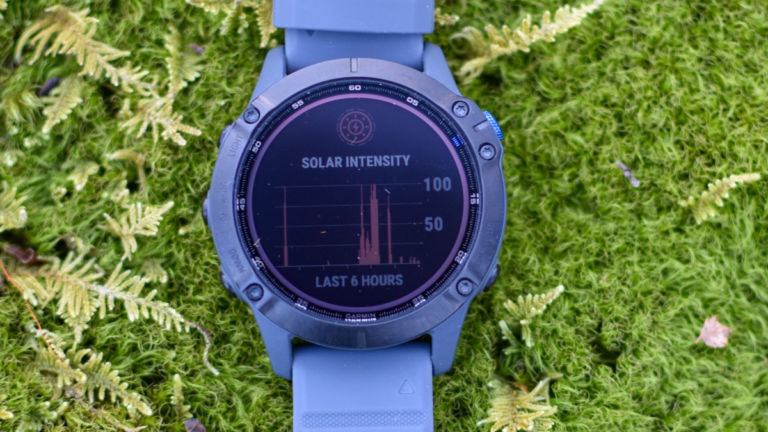
Hydration Tracking
Another new feature for smartwatches, hydration tracking lets you log your fluid intake to estimate your hydration levels. Unfortunately, this feature isn’t quite perfect because it can’t truly measure fluid loss. However, it usually hits pretty close to the mark and can help you maintain optimal hydration levels during longer activities.
Notably, this feature works together with other tracking systems to calculate your likely sweat loss, and it actively updates hydration goals to account for that. We expect this already-good feature to get even more accurate in the future.
Battery Life
Battery life is a crucial component of any smartwatch, but that’s particularly true when you’re actively tracking so many metrics. Every sensor and recording requires power, and even on the 6X case, there’s only so much battery life to go around. Unsurprisingly, advertised numbers mainly focus on the large battery.
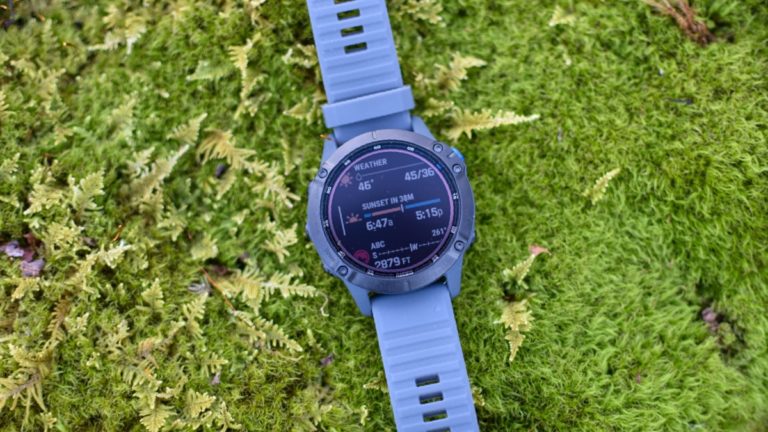
That said, Garmin rates this watch for up to 25 hours in GPS mode or 9 days in regular smartwatch mode. That’s a respectable amount of time, though not the best battery life in the industry. (An alternative watch, discussed below, has significantly better battery life.)
The Fenix 6 also has a battery saver mode, which is helpful if you plan to be out in the wilderness for a while and want to check the time without draining your battery too much. This mode lasts for up to 34 days. If you expect to approach that limit, consider getting the solar lens for recharging instead of the durability-focused sapphire lens.
Hormonal Tracking
Now this is a rarer feature for a smartwatch and one that not all users will need. The Fenix 6 includes a menstrual tracking system for female users, complete with the ability to log your symptoms and note any differences in your transition cycles. Aside from having a log, this system is designed to predict future changes based on your cycle.
Of course, the flip side is that some users aren’t comfortable logging this information onto a watch. It’s difficult to completely guarantee privacy, although we doubt Garmin intends to sell or otherwise abuse this information. Still, you should disable this function if you don’t need it or don’t want to use it.
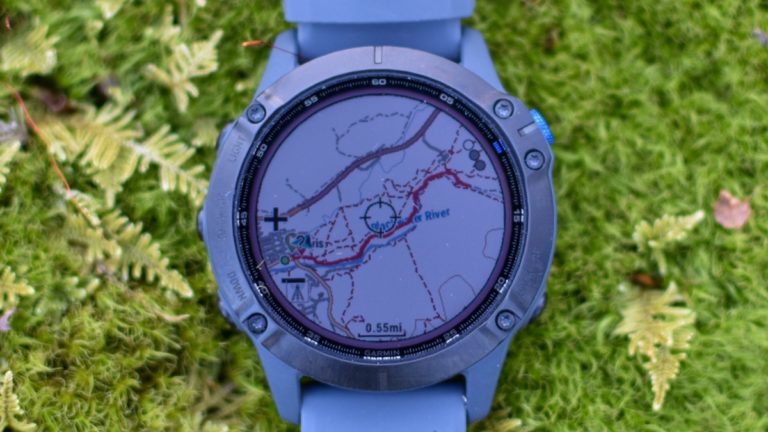
Multi-GNSS Support
Most people are familiar with the GPS navigation system. It’s no surprise that Garmin offers this functionality in their watches because GPS software is, in many ways, the core of their entire business model.
However, this watch also offers access to GLONASS and Galileo positioning. GLONASS is a network of additional satellites that provides information faster than relying exclusively on GPS.
The Galileo system is a GPS system launched by the European Union’s European Space Agency, and it’s accurate to about one meter with outstanding horizontal and vertical data.
Together, the Fenix 6’s access to all of these systems offers excellent reliability. Even if one network goes down entirely, it can access the others and continue functioning. Redundancy is valuable in extreme situations, so while most people will only see the benefit of faster speeds, this is a great feature to have.
Other Features
The Fenix 6 has many other features and options, but detailing all of these in full would result in this review becoming uncomfortably long. Suffice to say that it works well for many sports, including skiing and golfing.
Garmin Fenix 6 Reviews
While the Fenix 6 is a new watch, I looked around the internet for user reviews and found some that look rather positive. Some people compared it to the Apple Watch, which many people regard as a better entertainment device but a worse fitness device.
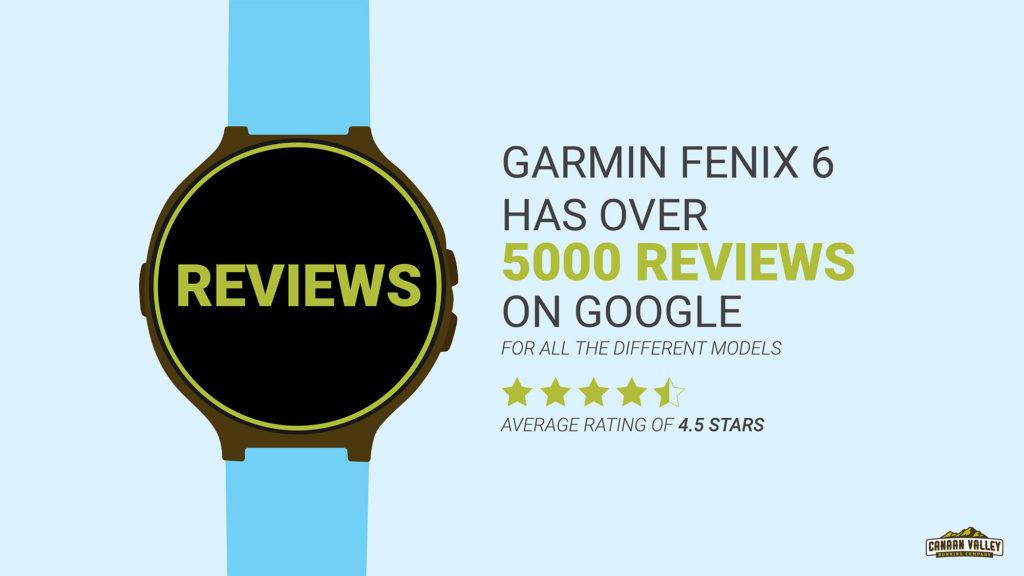
Alternatives
Here are some alternatives to consider if you want a GPS watch but don’t think the Garmin Fenix 6 is the right choice.
Garmin Forerunner 945
The Forerunner 945 is priced competitively with the entry-level version of the Fenix 6, but despite their surface similarities, these watches have different focuses. This watch is an excellent choice for triathletes and anyone who wants better metrics and insights for monitoring fitness performance.
That said, it has a smaller screen and can’t store quite as much data when compared to the Fenix 6. In short, the Forerunner 945 is only almost as good while being a little bit cheaper. If you’re okay with a slight downgrade, consider this watch.
The Forerunner 945 Is Better If:
- You want a multisport watch
- You don’t want something that sits too large on your wrist
- You’d rather save a little money instead of getting the latest and greatest thing
The Fenix 6 Is Better If:
- You want the premium option and don’t care as much about the price
- You want more durable materials for outdoor excursions
- You want additional control over your watch’s battery life
The Forerunner 945 Is Better If:
- You want a multisport watch
- You don’t want something that sits too large on your wrist
- You’d rather save a little money, and have a few less features
Coros Apex Pro
Coros isn’t nearly as well-known as Garmin, and while the Apex Pro isn’t quite as good overall, it has some impressive stats that make it a surprisingly competitive option at a lower price point. The main value of the Apex Pro compared to the Fenix 6 is its longevity. With a regular battery life more than two weeks longer, it’s an outstanding option for long-term use.
This trickles over to the GPS functions, especially if you set it to check GPS once a minute or so instead of every second. Battery sizes can make the difference between a GPS watch lasting an entire marathon or not. As a bonus, the Apex Pro is about 25% lighter than the Fenix 6, which matters when you’re moving your hand up and down for hours at a time.
The Apex Pro starts to fall short when you look at its other features and connectivity options, though. It doesn’t hold up nearly as well there, which makes it far less useful for everyday activities. That’s not a problem if you only want an exercise watch, but it’s worth keeping in mind.
The Apex Pro Is Better If:
- You want a lightweight GPS watch
- You want a long battery life
- You want a thin watch
- You want a lower price
The Fenix 6 Is Better If:
- You want to upload maps
- You want a higher-resolution screen
- You want better connectivity and features
- Lightweight GPS watch
- Long battery life
- Thin watch
- Lower price
Polar Grit X
Like the Apex Pro, the Polar Grit X isn’t quite as good overall as the Fenix 6, especially when you look at the top-end features. However, it does have a few useful features that make it worth considering.
First, the Polar Grit X has an excellent auto-pause feature. This helps determine when you’re taking a break during your workout and minimizes its functions. That ultimately helps improve battery life a little and avoids erroneous recordings.
The Polar Grit X is also noticeably lighter and a little thinner, with an easy-to-use touchscreen. However, while its features are surprisingly decent, its sensors are significantly poorer, and it ultimately can’t track as much as its more-expensive competitor.
The Grit X Is Better If:
- You want a lighter watch
- You prefer using touch screens
- You want to sync your watch to your calendar
- You take regular breaks during workouts
The Fenix 6 Is Better If:
- You prefer a longer battery life
- You want a higher screen resolution
- You want better sensors and features
The Grit X Is Better If:
- You want a lighter watch
- You prefer using touch screens
- You want to sync your watch to your calendar
- You take regular breaks during workouts
Final Thoughts
Tracking your fitness levels is important if you want to maximize your performance during marathons, and GPS watches like the Garmin Fenix 6 support that while also giving you access to apps, navigation, and other features that are useful when exercising.
The Fenix 6 is a particularly good choice for this because it’s durable, customizable, and has outstanding connectivity. While some competitors may be similar or better in specific areas, few GPS watches are as good in all areas. The Fenix 6 is a little expensive, especially if you want to get the Solar version, but it is worth checking out.

Robby McClung
This article was written by the editorial staff of the Canaan Valley Running Company and Robby McClung. Robby is the founder of the Canaan Valley Running Company. You can read more in the about section of the website on Robby and the Canaan Valley Running Company.








